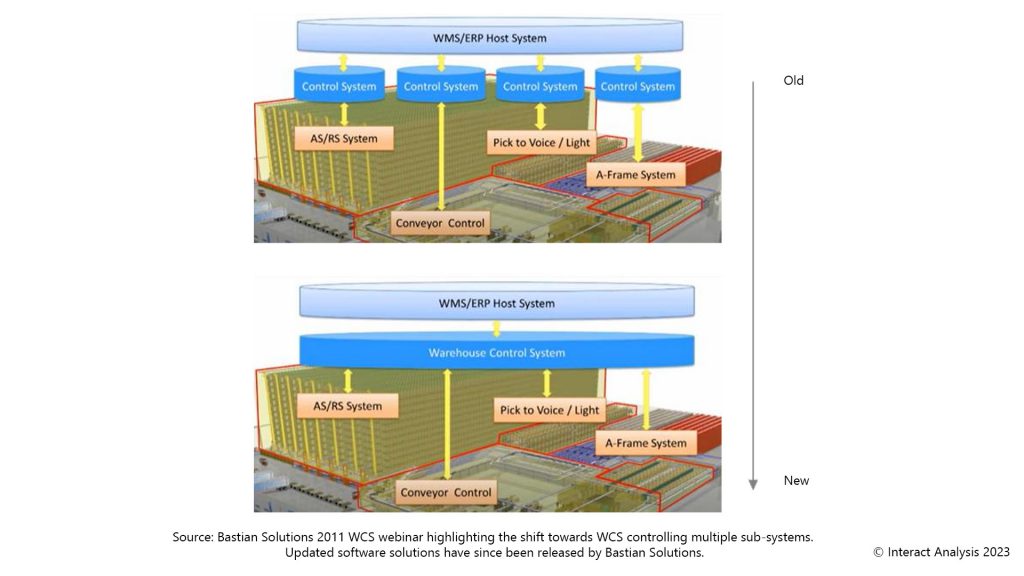Interact Analysis发布报告,AMR多机调度市场年增长率达138%
2023开年,全球权威行业研究机构Interact Analysis发布名为《AMR多车调度软件:新兴市场每年增长138%》的文章。英国资深研究经理Rueben Scriven通过对物流自动化新技术趋势——多车调度软件市场发展的调研,为大家分析了该技术的市场发展现状与前景。
报告原文链接:
AMR Multi-Fleet Orchestration Software: The Emerging Segment Growing 138% Annually - Interact Analysis多机器人调度市场增长趋势不容小觑,年增长率可达138%
The need for multi-fleet orchestration is growing in popularity with more and more vendors looking to enter this space. However, how many multi-fleet AMR deployments have there actually been and how big will this market eventually grow?
Growing at a forecast CAGR of 138% between 2021 and 2027, the development of multi-fleet orchestration platforms (sometimes referred to as third-party fleet management solutions) has largely mirrored the developments of the WCS (Warehouse Control Software) segment.
——Interact Analysis
多机器人调度的需求增长愈发受到关注,越来越多的供应商期望进入这个领域。然而,究竟有多少AMR混合车队在实际中应用?这个市场最终会发展成多大规模?Interact Analysis预测:2021年至2027年间,多机器人调度平台的年复合增长率(CAGR)为138%,其发展趋势很大程度上与WCS(仓库控制软件)相似。
多机协同打破自动化孤岛 升级流程挽救效率
In the early days of fixed automation, we saw a large number of ‘islands of automation’ where a particular workflow or task was automated.
Problems arose when warehouses started to use multiple types of fixed automation together. This led to the WMS having to communicate tasks to multiple sub-systems, resulting in inefficiencies as the sub-systems weren’t communicating with one another.
Similarly, we’re now reaching a point where multiple types of mobile robot systems are being used for different workflows. In many cases, manufacturers will develop AMRs for specific workflows. Orchestrating multiple fleets of AMRs from different manufacturers requires a third-party fleet management solution (FMS), sometimes referred to as a multi-fleet orchestration platform.
——Interact Analysis
很多物流仓早期的固定自动化系统里,存在大量的“自动化孤岛”,即某一部分工作流程或任务会率先实现自动化,但这些个系统的功能却是独立的,也无法与其他系统相集成。
物流仓升级发展的过程中,随着越来越多不同类型的固定自动化系统的加入,问题也随之而来:当系统要派发某个任务时,由于各个自动化子系统彼此之间无法通讯,WMS不得不与每个子系统分别对接,导致了沟通效率低下。

目前我们正处于需要不同移动机器系统来应对不同工作流程的阶段。多数情况下,制造商会生产不同类型的AMR来满足特定的作业流程。调度来自不同制造商的多种机器人需要一个第三方机器人车队管理系统(FMS)的介入。当然,客户可以将不同供应商的AMR直接集成到仓库系统中,形成一个个独立的自动化“街区”,但是机器人之间不能直接通信,这必然会导致效率损失和其他问题。多机调度软件发展的意义在于使多种类型的移动机器人系统应用于不同的工作流程,多车调度平台从中协调通信,从而提升整体工作效率。
多机调度殊途同归 壹悟科技崭露头角
There are two main approaches to multi-fleet orchestration. The most common today is to directly interface with the mobile robots (referred to as ‘Low-Level Control’), allowing the third-party fleet management system to ‘take control’ of the bots. The second approach, which is less common today but growing in popularity, is to have a third-party fleet management system feed tasks to the proprietary fleet management systems of each robot manufacturer (referred to as ‘High Level Control’). In other words, a fleet manager controlling a fleet manager.
Companies like Waku Robotics,CoEvolution, and InOrbit are able to provide both high-level and low-level control.
——Interact Analysis

据IA调研,主要有两种实现多机调度的方式。
一种是现在最常见的,直接对接移动机器人(即下层控制),下层控制允许车队管理系统直接“控制”机器人。
另一种是目前比较少有但逐渐开始流行,即一个第三方车队管理系统将任务发给每一个制造商所属的车队管理系统(即上层控制)。
在行业内,如壹悟科技这样的公司,能同时为客户提供以上两种控制方案。
事实上,壹悟科技能通过集群调度技术,以软件为核心与现有系统有机结合,真正做到异构机器人的混场调度;根据客户的实际需求场景配置机器人车队,提供智能高效的最优解决方案。
未来可期 行则将至
What is for certain, however, is that we’ll see a growing number of multi-fleet deployments as the market shifts from point solutions to end-to-end mobile automation.
——Interact Analysis
可以确认的是,当市场从单点解决方案趋向端到端的整体解决方案发展的同时,我们将会看到更多多车调度的应用落地。
壹悟科技也将依靠技术的创新,在多机混合调度路上作出更多更广的突破,面向市场散发光亮。

